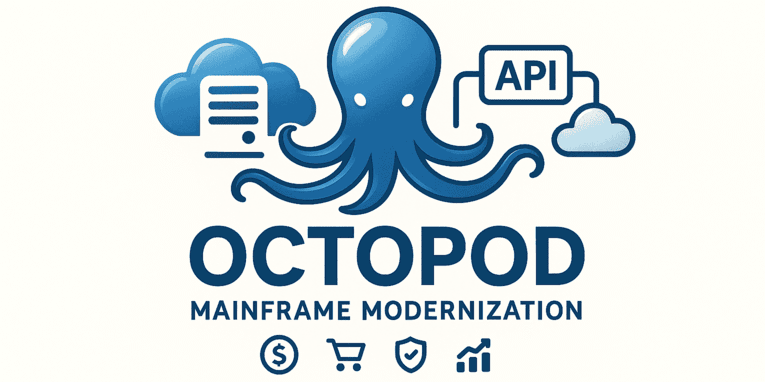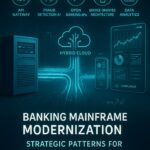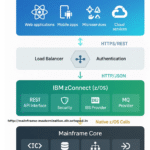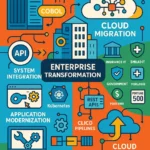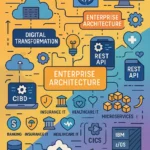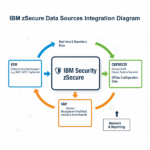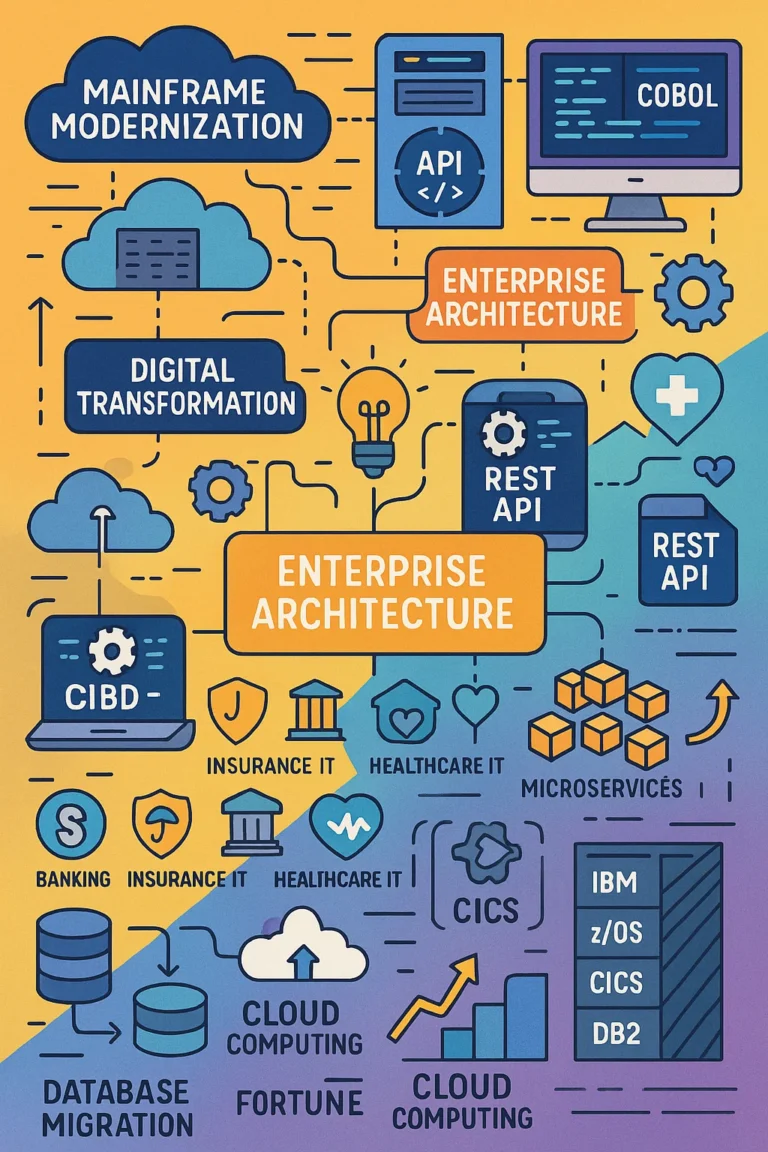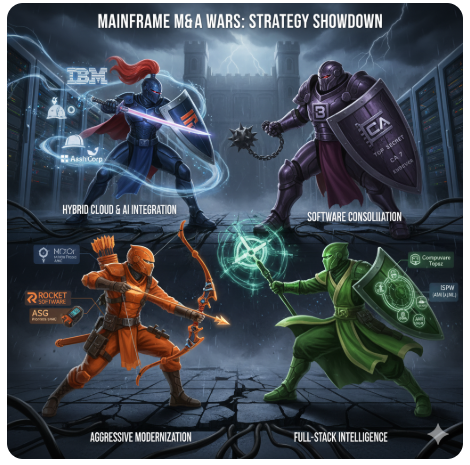Mainframe modernization projects have a notorious reputation for going over budget, missing deadlines, and sometimes failing entirely. According to Gartner, 70% of legacy system modernization initiatives face significant challenges, with many organizations making the same preventable mistakes repeatedly.
After analyzing hundreds of mainframe modernization projects across banking, insurance, and government sectors, we’ve identified the 10 most critical pitfalls that can derail your transformation efforts. More importantly, we’ll show you exactly how to avoid them.
- The High Cost of Modernization Mistakes
- Top 10 Mainframe Modernization Pitfalls
- 1. The Big-Bang Approach Disaster
- 2. Ignoring Mainframe Subject Matter Experts (SMEs)
- 3. Underestimating Data Complexity
- 4. Security and Compliance Oversights
- 5. Inadequate Testing and Validation
- 6. Change Management and Training Failures
- 7. Vendor Lock-in and Technology Dependencies
- 8. Scope Creep and Feature Enhancement
- 9. Infrastructure and Performance Assumptions
- 10. Budget and Timeline Unrealism
- Success Factors Checklist
- Getting Back on Track
- Key Takeaways
- Frequently Asked Questions
The High Cost of Modernization Mistakes
Before diving into specific pitfalls, it’s crucial to understand what’s at stake. Failed mainframe modernization projects typically result in:
- Financial losses: $2-10 million in wasted investment
- Operational disruption: Critical business processes at risk
- Competitive disadvantage: Delayed digital transformation initiatives
- Team demoralization: Loss of confidence in modernization efforts
- Regulatory issues: Compliance failures during transition periods
The good news? These outcomes are entirely preventable with proper planning and awareness of common pitfalls.
Top 10 Mainframe Modernization Pitfalls
1. The Big-Bang Approach Disaster
The Mistake: Attempting to modernize all mainframe applications simultaneously in a single massive project.
Why It Fails:
- Overwhelming complexity makes project management nearly impossible
- Higher risk of catastrophic system failures
- Limited ability to learn and adjust from early mistakes
- Resource constraints lead to corner-cutting
- Stakeholder fatigue from extended timelines
Real-World Example: A major insurance company attempted to replace their entire mainframe claims processing system in one go. After 18 months and $15 million, they had to abandon the project due to unmanageable complexity and stakeholder conflicts.
How to Avoid:
- Adopt an incremental approach – start with 1-2 applications
- Implement a phased rollout strategy over 12-24 months
- Establish success criteria for each phase before proceeding
- Build learning loops to incorporate lessons between phases
2. Ignoring Mainframe Subject Matter Experts (SMEs)
The Mistake: Sidelining experienced mainframe developers and operators in favor of modern technology teams.
Why It’s Critical: Mainframe SMEs possess irreplaceable knowledge about:
- Business logic embedded in decades-old COBOL code
- Undocumented system dependencies and integrations
- Historical reasons for specific architectural decisions
- Performance optimization techniques unique to mainframes
The Consequence: Without SME input, teams often discover critical requirements too late, leading to costly rework and system instabilities.
How to Avoid:
- Include mainframe SMEs in all planning sessions
- Create knowledge transfer programs early in the project
- Establish mentorship pairs between mainframe and modern technology experts
- Document tribal knowledge before it’s lost to retirement
3. Underestimating Data Complexity
The Mistake: Treating data migration as a simple “copy and paste” operation.
The Reality Check:
- Mainframe data often lacks modern data quality standards
- COBOL data structures don’t map directly to relational databases
- Decades of data accumulation creates massive volume challenges
- Business rules are often embedded in data formats rather than applications
Common Data Challenges:
- Packed decimal formats that modern systems don’t recognize
- EBCDIC to ASCII character encoding conversions
- Hierarchical data structures that need flattening for relational databases
- Embedded business logic in copybook definitions
How to Avoid:
- Conduct thorough data profiling and quality assessment
- Allocate 40-50% of project time to data-related activities
- Implement data validation checkpoints throughout migration
- Create comprehensive data mapping documentation
4. Security and Compliance Oversights
The Mistake: Treating security as an afterthought instead of a foundational requirement.
High-Risk Areas:
- API security: New REST endpoints may lack proper authentication
- Data in transit: Encryption gaps during migration processes
- Access controls: Modern systems may not match mainframe security granularity
- Audit trails: Loss of detailed logging capabilities during transition
Compliance Nightmares:
- SOX compliance gaps during financial system transitions
- PCI-DSS violations in payment processing migrations
- GDPR data protection issues during European banking modernizations
How to Avoid:
- Implement security-by-design from project inception
- Engage compliance teams early in planning phases
- Conduct security assessments at each migration milestone
- Maintain parallel audit capabilities during transition periods
5. Inadequate Testing and Validation
The Mistake: Relying on basic functional testing without comprehensive validation strategies.
Testing Gaps That Kill Projects:
- Performance testing under real-world transaction volumes
- Integration testing with downstream systems
- Data integrity validation across migration processes
- Disaster recovery testing for new architectures
- User acceptance testing with actual business users
The Hidden Cost: A major bank discovered data corruption issues in their modernized loan processing system only after processing $50 million in transactions, requiring manual reconciliation and customer notifications.
How to Avoid:
- Implement parallel processing during transition periods
- Create automated test suites for continuous validation
- Establish data reconciliation checkpoints throughout migration
- Conduct stress testing with peak transaction volumes
6. Change Management and Training Failures
The Mistake: Focusing solely on technology while ignoring the human element of transformation.
People-Related Challenges:
- Resistance from experienced staff comfortable with legacy systems
- Skills gaps in modern technologies among existing teams
- Communication breakdowns between business and technical teams
- Unrealistic expectations about modernization timelines and outcomes
Business Impact: Even technically successful modernizations can fail if users can’t effectively operate new systems or if business processes aren’t properly adapted.
How to Avoid:
- Develop comprehensive change management plans
- Invest in extensive training programs for end users
- Create champions network of early adopters
- Establish clear communication channels throughout the project
7. Vendor Lock-in and Technology Dependencies
The Mistake: Creating new dependencies that are as limiting as the original mainframe constraints.
Common Traps:
- Proprietary cloud services that prevent future migrations
- Specialized migration tools that create ongoing licensing costs
- Single-vendor solutions that eliminate competitive alternatives
- Custom integration platforms that require specialized expertise
How to Avoid:
- Prioritize open standards and portable architectures
- Evaluate total cost of ownership including future flexibility
- Negotiate exit clauses in vendor contracts
- Maintain multi-vendor strategies where possible
8. Scope Creep and Feature Enhancement
The Mistake: Using modernization as an opportunity to add new features and capabilities without proper impact assessment.
Why It’s Tempting:
- “Since we’re modernizing anyway, let’s also add mobile support”
- “This would be a good time to improve the user interface”
- “We should integrate with our new CRM system while we’re at it”
The Reality: Each additional requirement exponentially increases project complexity, timeline, and risk.
How to Avoid:
- Establish strict scope boundaries before project initiation
- Implement formal change control processes
- Calculate true cost impact of scope additions
- Phase new features into post-modernization releases
9. Infrastructure and Performance Assumptions
The Mistake: Assuming that modern cloud infrastructure will automatically provide better performance than optimized mainframe systems.
Performance Pitfalls:
- Network latency impacting real-time transaction processing
- Inadequate capacity planning for peak processing periods
- Database performance degradation with poorly optimized queries
- Integration bottlenecks at API gateways and message queues
Reality Check: Mainframes are engineered for extreme reliability and performance. Modern alternatives must be carefully architected and tested to match these capabilities.
How to Avoid:
- Conduct comprehensive performance benchmarking
- Implement load testing with realistic transaction volumes
- Plan for scalability requirements beyond current usage
- Design performance monitoring into new architectures
10. Budget and Timeline Unrealism
The Mistake: Underestimating the true cost and timeline requirements for comprehensive modernization.
Common Underestimations:
- Discovery phase often takes 2-3x longer than planned
- Data migration complexity adds months to timelines
- Integration testing reveals unexpected dependencies
- User training and adoption requires significant ongoing investment
Budget Reality Check:
- Successful modernization projects typically cost 1.5-2x initial estimates
- Timeline overruns of 30-50% are common even in well-managed projects
- Ongoing operational costs may increase initially before optimization benefits are realized
How to Avoid:
- Add 30% contingency to initial budget and timeline estimates
- Break projects into smaller, measurable milestones
- Implement regular budget and timeline reviews
- Plan for post-modernization optimization investments
Success Factors Checklist
Use this checklist to evaluate your modernization project’s readiness and ongoing health:
Pre-Project Planning ✅
- Executive sponsorship secured with clear success metrics
- Mainframe SMEs identified and committed to project
- Comprehensive application inventory completed
- Data quality assessment conducted
- Security and compliance requirements documented
- Budget includes 30% contingency for unexpected challenges
During Execution ✅
- Weekly progress reviews with stakeholder communication
- Parallel testing conducted throughout migration phases
- Data integrity checkpoints implemented and monitored
- User training programs running alongside technical development
- Performance benchmarks measured and validated
- Change control processes enforced for scope management
Post-Migration ✅
- Business process validation completed with end users
- Performance optimization ongoing with monitoring dashboards
- Knowledge transfer documented for ongoing maintenance
- Lessons learned captured for future modernization phases
- Success metrics measured and communicated to stakeholders
Getting Back on Track
If your modernization project is already experiencing some of these pitfalls, don’t panic. Here’s how to recover:
Immediate Actions (Week 1)
- Conduct honest assessment of current project status
- Engage mainframe SMEs if they’ve been sidelined
- Implement data validation checkpoints to catch issues early
- Establish weekly stakeholder communication rhythms
Short-term Recovery (Months 1-2)
- Re-scope project to focus on core functionality first
- Implement parallel testing for risk mitigation
- Upgrade change management processes and training
- Reassess budget and timeline with realistic contingencies
Long-term Success (Months 3+)
- Build comprehensive testing automation for ongoing validation
- Establish performance monitoring and optimization processes
- Create knowledge management systems to prevent future issues
- Plan next phase incorporating lessons learned
Key Takeaways
Mainframe modernization doesn’t have to be a high-risk gamble. The organizations that succeed follow these fundamental principles:
- Start small and build momentum with incremental wins
- Respect and leverage mainframe expertise throughout the process
- Invest heavily in data quality and testing – it’s worth the effort
- Plan for the human side of transformation with proper change management
- Be realistic about complexity and plan accordingly
Remember: the goal isn’t to complete modernization as quickly as possible, but to complete it successfully with sustainable results that truly benefit your organization.
The mainframe modernization journey is complex, but with awareness of these common pitfalls and proactive planning to avoid them, your organization can achieve the agility, cost savings, and innovation capabilities that make the investment worthwhile.
Ready to avoid these pitfalls in your modernization project? Start with our comprehensive assessment framework to identify potential risks before they become expensive problems.
Frequently Asked Questions
Q: What’s the most common reason mainframe modernization projects fail? A: The “big-bang” approach accounts for approximately 40% of project failures. Organizations that attempt to modernize everything simultaneously face overwhelming complexity and higher risk of catastrophic failures.
Q: How much should we budget for contingencies in a modernization project? A: Industry best practice recommends 30% contingency for budget and timeline. Data complexity and integration challenges are the most common sources of unexpected costs.
Q: Should we replace our mainframe team with cloud experts? A: Never replace mainframe SMEs entirely. The most successful projects create hybrid teams that pair mainframe expertise with modern technology skills. Mainframe knowledge is irreplaceable for understanding business logic and system dependencies.
Q: How long do most modernization projects actually take? A: While initial estimates average 12-18 months, successful projects typically take 18-30 months when including proper testing, training, and optimization phases.
This article provides general guidance on mainframe modernization risk management. For specific technical implementation details and project planning assistance, consult with certified mainframe modernization specialists.
